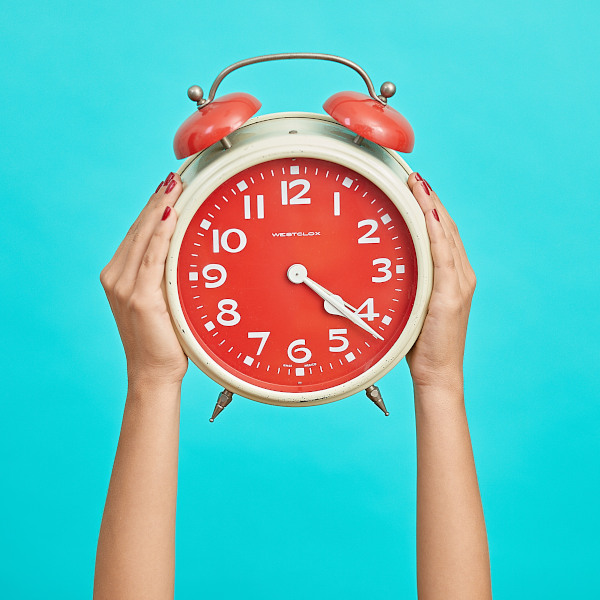
Daily Rhythms
The body has a built-in time-keeping system that drives our daily rhythms – particularly those of eating a sleeping. At the core of this is the daily chemical conversion of the wakeful hormone serotonin into the sleep hormone melatonin – a process that takes about 24 hours.
The daily cycle
Many hormones go through rhythmic fluctuations every day. The oscillations happen independently of any external prompting. Even in a black room with no windows, the body gets a serotonin surge in the morning, which wakes it up. However, these daily rhythms are not hard-wired – they are constantly readjusted and can be changed radically when we travel to a different time zone.
The circadian clock
Our bodies run on a (roughly) 24-hour hormone cycle, known as a circadian rhythm. The biological processes that govern it are called the circadian clock, which is what governs all the body’s rhythms. One of the main cogs in this clock is a very small region of the brain known as the suprachiasmatic nucleus (SCN). Located very near the optic nerves, the SCN uses the amount of light entering the eye to calibrate the circadian clock.
Can stress make you ill?
Stress hormones prepare us for fight or flight, but they also take a toll on some of our other systems, particularly our immune system. Chronic stress can, therefore, lead to disease.

Jet lag
Air travel transports us into new time zones faster than the body can adjust. It takes time for the new rhythm of daylight to reset the body clock. Some hormone cycles are more flexible than others – cortisol can take 5 – 10 days o adapt. While our rhythms adjust, the body feels hungry and sleepy at all the wrong times – a phenomenon called jet lag. Shift workers experience this regularly, and long term health consequences are not yet fully understood.
10 points on our daily rhythm:
- Wakeful serotonin – Light stimulates the suprachiasmatic nucleus to convert melatonin into serotonin – a hormone that helps get the brain and body going (especially in the morning).
- Stress-managing cortisol – As you start the day, the body produces the steroid hormone cortisol, which helps the body deal with stress by increasing blood sugar levels and kick-starting metabolism.
- Hunger hormones – Hunger hormones rise and fall throughout the day. Levels of ghrelin, the appetite increaser, rise during fasting, increasing hunger in the morning. Leptin, the appetite suppressor, signals when you are “full”.
- Cortisol peaks – After the morning surge of cortisol, the body gets another dose around noon. From then on, cortisol plays a smaller role in the system. Melatonin is at its lowest levels at this time.
- Aldosterone surge – Mid-afternoon sees the peak in the hormone aldosterone. This helps to keep the blood pressure steady by increasing water reabsorption in the kidneys.
- Sleepy melatonin – Decreasing light levels prompt the conversion of serotonin into melatonin. This slowly prepares the body for sleep and finally causes sleepiness itself.
- Stimulating thyroid – In the evening, levels of thyroid-stimulating hormone abruptly increase. This stimulates growth and repair, but also inhibits neuronal activity, possibly preparing the body for sleep.
- Growth hormone – The first two hours of sleep see a burst in growth hormone, which helps children grow and adults regenerate. It’s also released in the day, but more is produced at night when the body can focus on repair.
- Melatonin peaks – Melatonin levels in the blood are highest around midnight. This is also when cortisol levels are at their lowest. This ensures that the body rests completely overnight.
- Testosterone surge – Men experience a rise in testosterone levels at night, regardless of whether or not they are asleep.



